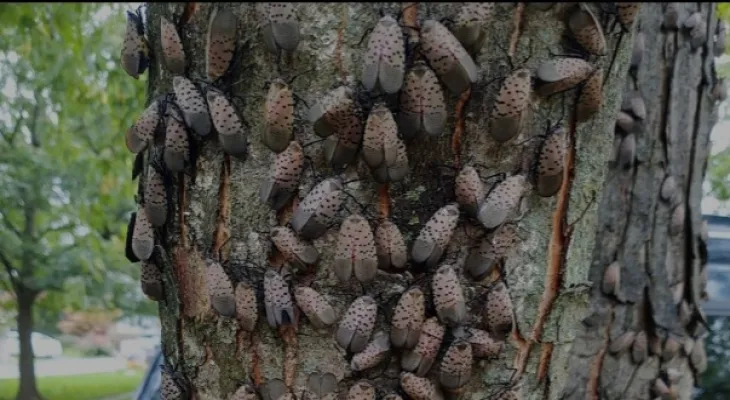Search here
Newspaper
Search here

Arab Canada News
News

Published: September 27, 2022
The Canadian Food Inspection Agency has asked Canadians to monitor any disruption that could cause a disaster for wineries and fruit farms in the country, due to the spotted lanternfly, a pest native to China that has been making its way through the United States since 2014. But in early September, hundreds of adults were found in a residential area in Buffalo, New York, only 45 km from the Canadian border, which prompted the agency to sound the alarms, and last week the agency tweeted asking Canadians to report any sighting of the pest on this side of the border "immediately".
The sought-after insect feeds on sap, especially from fruit trees, and can also cause severe damage to orchards and vineyards. In the same context, Diana Mugg, a specialist in the agency's invasive species program, said: "We have become increasingly concerned, especially about our grape-growing industries, because this pest has significant impacts on the grape and fruit industry in the United States." The first sighting of the pest in North America was in Pennsylvania in 2014, and since then, the tracking program monitored by Cornell University has documented the pest in 14 U.S. states. Pennsylvania, New Jersey, Maryland, and Delaware have the highest number of sightings, along with areas in and around New York City. It has been found as far east as Rhode Island, south to North Carolina, and as far west as Indiana. Mugg said that dead adults have been found on trucks in Canada, as females lay their eggs on almost anything stored outdoors, stating: "This insect can unfortunately travel on all sorts of things; it's not just travel on plants, but it can travel on containers, trucks, cars, camping equipment. We ask everyone to be more vigilant in looking for this pest, especially if they have traveled to areas in the U.S. where the pest exists." Also, Mugg says the insect is very distinctive, with spotted wings, pink color when the wings are closed, and light red color when the wings are open.
The insects require large amounts of sap to survive, producing sugary waste known as "honeydew" which attracts pollinators such as bees and wasps and can cause fungal and mold growth on trees, potentially damaging them. Pennsylvania also stated that an analysis in 2019 showed that the pest could cause damage to its economy exceeding 300 million dollars annually.
Comments